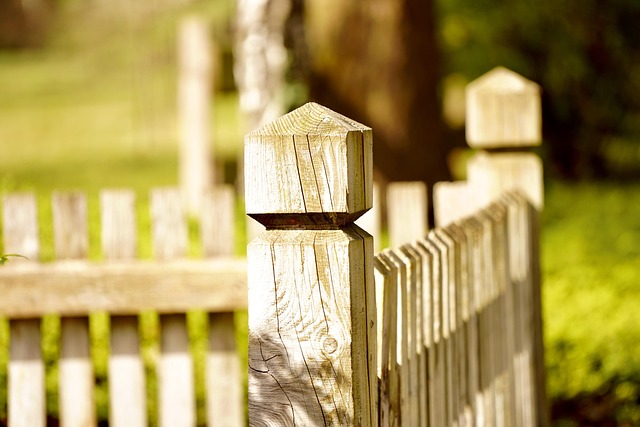Fences serve as both structural elements and design statements in outdoor spaces. To maximize their aesthetic appeal and longevity, fence staining and sealing are essential processes. This article guides you through the intricacies of these practices, from understanding the benefits and exploring various stain types to mastering preparation techniques and choosing the perfect finish. We’ll also delve into application methods for even coverage and the critical role sealing plays in protecting your stained fence against the elements.
- Understanding Fence Staining: Benefits and Types
- Preparation: Ensuring Optimal Results Before Staining
- Choosing the Right Stain: Color, Finish, and Protection
- Application Techniques for Even Coverage
- Sealing for Durability: Protecting Your Stained Fence
Understanding Fence Staining: Benefits and Types
Fence staining is a popular choice for enhancing the aesthetic appeal and protecting wooden fences. By applying a coat of stain, you can transform an ordinary fence into a visually appealing feature that complements your outdoor space. Staining offers numerous benefits beyond aesthetics; it helps to preserve wood by blocking out moisture, UV rays, and other elements that can cause fading or rot. This process creates a protective barrier, extending the life of your fence and reducing maintenance needs.
There are various types of fence stains available on the market, each with unique characteristics. Water-based stains are popular for their low odor and quick drying time, making them user-friendly. Oil-based stains, while more durable, can take longer to dry and may emit a stronger scent. Solid color stains offer a wide range of hues, allowing you to achieve any desired look. Transparent or semi-transparent stains enhance the natural wood grain, providing protection without obscuring the fence’s beauty.
Preparation: Ensuring Optimal Results Before Staining
Before applying any stain or sealer, proper preparation is key to achieving optimal results. Start by cleaning your wooden fence thoroughly; this removes any dirt, dust, or debris that could impede the staining process and causes an uneven finish. Use a pressure washer or a stiff brush with detergent to ensure a deep clean.
Inspect the wood for any damage such as rot, cracks, or splinters. Repair these issues before proceeding, as they can affect the adhesion of the stain. Sanding the fence slightly can also help create a rougher surface, allowing the stain to bond better.
Choosing the Right Stain: Color, Finish, and Protection
When choosing a fence stain, one of the primary considerations is color. Different stains offer various hues, from rich, deep tones to subtle, natural shades. The right color should complement your home’s exterior and the surrounding landscape, enhancing overall curb appeal. It’s worth noting that lighter colors reflect sunlight, reducing heat absorption and potential warping or swelling of the wood over time.
Finish type is another critical factor. Water-based stains are popular for their low odor and easy application, while oil-based options provide deeper penetration and a more durable finish. Each stain type offers different levels of protection against elements like UV rays, rain, and mold growth. Look for a product labeled as “waterproof” or “weatherresistant” to ensure your fence stays protected and maintains its vibrant appearance for longer periods.
Application Techniques for Even Coverage
When applying fence stain or sealant, achieving even coverage is essential to ensure a professional finish and prolong the life of your wooden fence. Start by preparing the surface thoroughly, cleaning any dirt, debris, or existing stains with a pressure washer or brush. This step ensures that the paint adheres better and creates a smooth base.
Use a wide-brush roller or a flat paintbrush for application, depending on the size of your fence and the desired finish. For larger areas, a roller is more efficient as it covers more ground per stroke. Ensure consistent pressure while rolling to avoid missed spots. If using a brush, take your time, overlapping strokes slightly to maintain even coverage. Regularly dip your tools in the stain or sealant to maintain optimal color consistency.
Sealing for Durability: Protecting Your Stained Fence
After staining your wooden fence, the next crucial step is sealing it to ensure long-lasting durability. Sealing acts as a protective barrier, shielding your fence from the elements and preventing stains from fading or peeling. It also fills in any pores and cracks, enhancing the overall appearance of the wood. Choose a high-quality sealant designed for exterior use, as these are formulated to withstand UV rays, rain, snow, and other environmental factors.
Regular sealing, typically done every one to two years, will keep your fence looking fresh and new. This simple maintenance practice not only preserves the beauty of your investment but also extends its lifespan, saving you money in the long run by delaying the need for replacement or repair. A well-maintained sealed fence can withstand the test of time, retaining its vibrant color and sturdy structure.
